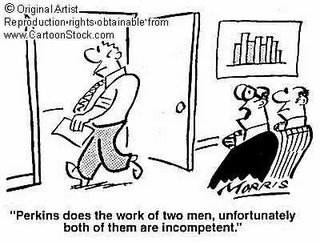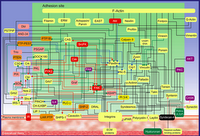Dodging Doomsday--Taking Out Insurance on the Unthinkable
 Civilisation is a delicate thing. It could end in many ways. If we humans were prudent, we would take certain precautions.
Civilisation is a delicate thing. It could end in many ways. If we humans were prudent, we would take certain precautions.The folks at the Lifeboat Foundation feel the same way. They are dedicated to the creation of Ark I, a self-sustaining space colony for the preservation of technological civilisation.
Ark I will be initially placed in orbit around the Earth at a height of 400 kilometers (248 miles) to make it easier to engage in trade and tourists from Earth. Both it and the other Arks will be moved further away from the Earth as the project progresses.Source.
Why should we live in orbit rather than on a planet or moon? Because orbit is far superior to the Moon and Mars for colonization, and other planets and moons are too hot, too far away, and/or have no solid surface.
Another such group is ARC--Alliance to Rescue Civilization. Here is part of ARC's mission statement:
Source.
ARC Mission:
The mission of the Alliance to Rescue Civilization (ARC) is to protect the human species and its civilization from destruction that could result from a global catastrophic event, including nuclear war, acts of terrorism, plague and asteroid collisions. To fulfill its mission, ARC is dedicated to creating continuously staffed facilities on the Moon and other locations away from Earth. These facilities will preserve backups of scientific and cultural achievements, and of the species important to our civilization. In the event of a global catastrophe, the ARC facilities will be prepared to reintroduce lost technology, art, history, crops, livestock and, if necessary, even human beings to the Earth.
ARC Vision
The Alliance to Rescue Civilization is a very long-term international project. It seeks to copy and continuously update the essence of Earth in its many forms for safekeeping at a manned site off the planet (the Moon or a huge station are the leading candidates.) ARC would in effect comprehensively back up Earth's collective hard drive for use in rescuing and rebuilding the planet in the event of a catastrophic disaster, natural or man-made. It would in no sense be a time capsule, but would rather be an updated record of Earth's multiple life forms, flora and fauna, and its broad spectrum of arts and sciences, history, technology and all else that constitutes the planet's collective nature and culture.
In the event of a major catastrophe, for example worldwide plague, comet impact, nuclear war or social collapse, the staff of ARC will function in a rescue capacity rather than as librarians. They will be prepared to help the survivors reestablish a functioning technological society, or in the worst instance, to repopulate the Earth themselves, and re-introduce the additionally needed biological species here. The primary mission of ARC will be to secure our tenancy of this planet, although it is fully compatible with plans to extend human settlement beyond the Earth-Moon system. ARC will provide our manned space program with the central purpose which it has so sorely lacked, linking it firmly to human survival on our home planet and elsewhere. The ARC facility will stand as a visible and inspiring symbol of our aspirations, one which can overcome the negative connotations associated with disaster relief. With ARC in place, of course, other scientific and commercial uses of space will be facilitated. ARC can serve as an engine that pulls many freight cars.
In 1975, Oscar Falconi wrote an essay on the need for humans to colonize space. He discusses several ways in which humans might destroy themselves and their ability to survive on earth. Arthur C. Clarke reached the same conclusions as Falconi in his 1951 book, The Exploration of Space. More recently, astrophysicist Stephen Hawking wrote: "I don't think the human race will survive . . unless we spread into space."
It is wise for humans to take precautions against likely disasters. Distributing human knowledge databases in different regions of space might be helpful one day.
Many more links on this and similar topics at Sylvia Engdahl's site.
Labels: catastrophe, extreme colonies, Human Survival, space dangers, space settlements




















